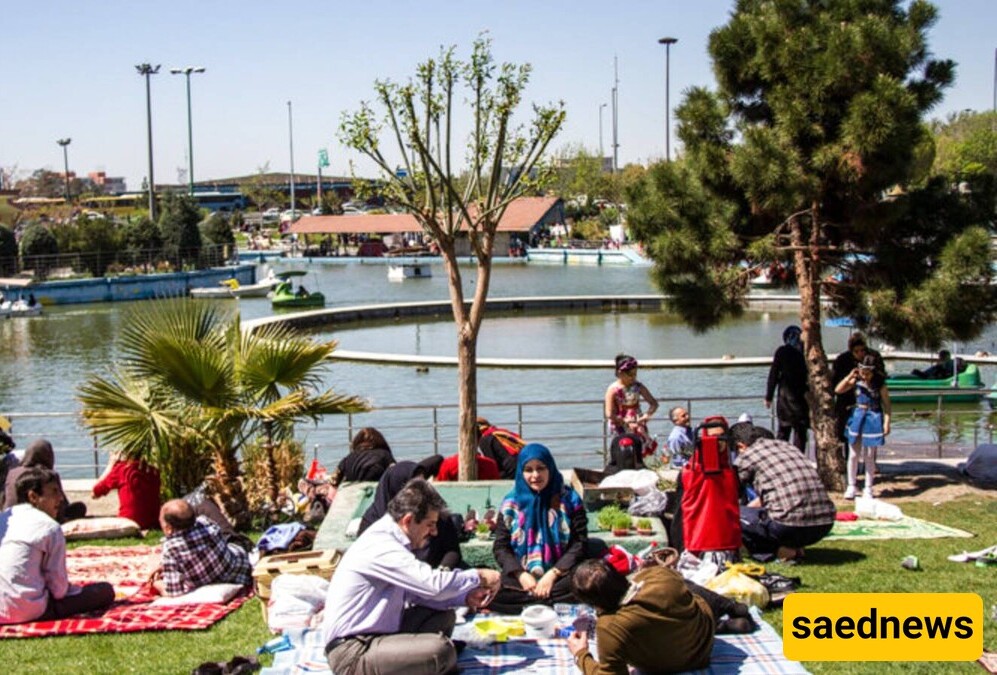SAEDNEWS: Sizdah Be-dar is celebrated on Farvardin 13 as an ancient tradition of Nowruz. On this day, people go to green spaces and celebrate the last day of the Nowruz holidays out in the open.

According to SAEDNEWS, Sizdah Be-dar, celebrated on the 13th of Farvardin in the Persian calendar, marks the end of the Nowruz holidays. This beautiful tradition invites people to step outside, enjoy nature, and bring joy to their communities.

Since the Islamic Revolution, sizdah Be-dar has been recognized as the Day of Nature in Iran and is celebrated as a national holiday. On this day, families and friends gather in parks and green spaces, embracing the beauty of the outdoors to close the celebrations of Nowruz.

The roots of Sizdah Be-dar go back to ancient Persia, where it is believed that King Jamshid, the founder of Nowruz, started this tradition to enjoy nature with his people. Over time, the practice grew, and after 12 days of New Year celebrations, Iranians would go outdoors to celebrate one last day in nature.
Interestingly, the 13th day of each month is known as "Tir Ruz," connected to Tishtrya, the star associated with rainfall. It’s a time for blessings and celebration.
In ancient times, the number 13 was thought to bring bad luck. This belief stemmed from astrology, where the number 12 is significant, representing the twelve houses in the zodiac, each ruled by a goddess. The number 13, lacking a corresponding goddess, was viewed as a negative omen. To counter this bad luck, people would leave their homes on the 13th day and spend the day outdoors.
Today, many Iranians no longer see the number 13 as unlucky, treating it as an old superstition. Still, many cultures, including Christians, also have similar fears about the number 13.

Sizdah Be-dar is rich in traditions that bring communities together in unique ways.
Farvardin 13 is associated with the Goddess of Rain, and in the past, people prayed for abundant rain on this day; however, this practice has faded over time.
On Sizdah Be-dar, Iranians also enjoy playful pranks similar to April Fools’ Day. Each year on April 1 (or sometimes the day before), people engage in light-hearted trickery, making it a fun day full of laughter.
One beloved tradition is the tying of knots in the grass, known as “Sabzeh gereh zadan.” This act symbolizes making wishes and is particularly special for unmarried women hoping to find a husband.
Another custom involves throwing the Haft Sin sprouts into running water, representing a desire to rid oneself of misfortune. This is based on the belief that the freshness of the sprouts absorbs negativity.
In some Kurdish regions, people throw thirteen pebbles over their shoulder, making a wish with each stone to chase away bad luck.

A delicious tradition is preparing a dish called Aush, which is often shared with neighbors. It’s a way of wishing everyone a happy Sizdah Be-dar while enjoying nature.
Families often finish up leftover trail mix from Nowruz on this day. A special snack called Kahoo Sekanjabin, which is lettuce dipped in a sweet syrup, is also enjoyed. This combination is thought to balance the body’s energies according to traditional Persian medicine.
Nowruz and Sizdah Be-dar strengthen community bonds through shared traditions and celebrations. Events like Chaharshanbe Soori and Sizdah Be-dar gatherings foster a sense of togetherness, reminding us of the joy of community spirit.
Sizdah Be-dar is more than just a day; it’s a rich cultural celebration filled with love for nature, customs, and meaningful connections. As the Nowruz festivities come to an end, this special day reminds us to appreciate and nurture our relationship with the environment and with each other.

